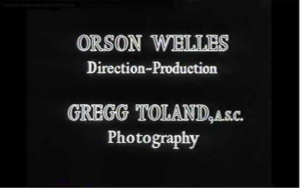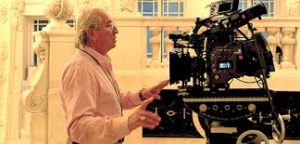
DOP or Cinematographer : Mahesh Muthuswami
Sep 08 2018
The DOP

I got a call from the Associate Director of a feature we recently wrapped . He was preparing the opening and end credits of the film. He wanted to know ,if should I be given credit as the Director of Photography or as Cinematographer.
Without wasting even a second, I told him , “ Of course , Cinematographer “.
What exactly is the difference ? Or is there a difference at all !?
From my film school days , I had this clear distinction in my mind , between what it means to be called as a Cinematographer or as a Director of Photography.
The Director of Photography , is someone who directs the camera crew; the Camera Operator , the Focus Puller ,the Gaffer , the Grip and so on. He will be sitting at the monitor and doing this.Many a times, there might be more than one camera rolling at the same time. The Director of Photography never operates the camera himself. Even , in some cases, if he wants to operate, he still has to hire and pay a camera operator , for the union’s sake.And this is the hierarchy from the Hollywood way of doing things.

On the other hand,in Europe , the Cinematographer himself will be hands-on , on the camera , operating. He composes every shot , paving way to achieve his creative vision , completely. He had , more of himself in the compositions and camera movements. Most of these films were auteur driven .Not studio backed. The credits in all these films ,would read as Cinematographer.This was followed in India too.
And since I prefer to operate the camera and compose , myself , I obviously wanted to be credited as Cinematographer.
If you carefully notice all the international bodies , they all have Cinematographers in their name ; Not director of photography. The American Society of Cinematographers ( ASC ) , the British Society of Cinematographers ( BSC ) , the Indian Society of Cinematographers ( ISC ) or our very own the South Indian Cinematographers Association ( SICA ).This goes a long way to affirm, what the professional credit should actually be.
So it was very simple , the difference between these two terms. But it doesn’t remain so simple , anymore.
In the early days of cinema, there was generally only one cameraman who worked without an assistant, hand cranking the camera and very often developing and editing the footage himself. When foreign markets , outside of USA , became important it was common to run a second camera with a separate operator alongside the main camera for a second negative. Further developments allowed the use of an electric motor, which freed the hands of the cameraman to adjust focus or pan and tilt the camera. Then along with panchromatic film came sophisticated artificial lighting allowing more dramatic use of light and shade ;As the industry progressed the responsibilities of the cameraman were increasing.This meant that the cameraman could no longer be the `sole’ cameraman. Now, he had to have several operators and it’s possible that the term “Director of Photography” grew from that.
Its interesting to note how different other styles of credits too evolved , from the initial days of Films.
Photography by , Camera by , Camera work by ,
Cameraman ,Director of Photography & Cinematographer ;
Most Hollywood studio pictures of the 20’s, 30’s and 40’s usually say “photographed by” or “photography” (which is a nice label but of course does not accurately represent moving photography as “cinematographer” does.)
Looking at the credits for important movies after the invention of sound , one could find with the words `DIRECTOR OF PHOTOGRAPHY” appears to be given in the 1937 film , ONE HUNDRED MEN AND A GIRL , for Joseph Valentine ASC.
One of the most revered cameramen of that period, Gregg Toland ASC, shot CITIZEN KANE in 1941 with one of the most notable credits for a cameraman on the same card as that of the director Orson Welles.

However, in the 1940 film GRAPES OF WRATH (1940)(( a year earlier )) which Gregg Toland shot for director John Ford he is credited as Director of Photography.
In the earlier era Tamil films , we could see the use of Photography by , for cinematographer Y B Washikar , who shot the 1937 ThyagarajaBhagavathar film Chintamani.

Nowadays its commonplace that the cameraman on a mainstream feature film will be credited as “Director of Photography”.
And then since obviously the Director of Photography , itself is too long , in the print & publicity , it got shortened to DOP .The term DOP , has become so generic, that everyone now , started calling the Cinematographer as the DOP.
Now that film making and cinematography has become more democratized, with the onslaught of DSLRs & Mirrorless Cameras &Cellphone Cameras , shooting a video and publishing it online , has become very easy. So too ,using the term DOP . In crediting the person who shot or captured that. May be because , DOP , sounds pretty cool and hep.
The legendary Vittorio Storaro once famously said that the reason he called himself “Cinematographer” and not “Director of Photography” was that he believed that there was only one Director on a shoot.

A Cinematographer’s work must demonstrate creativity and an appreciation of the art of cinema ; much more than just professional competence.
The ability to compose a shot, using elements of composition – framing, lighting and movement – to embody the meaning of a narrative and arrive at a mood ; that makes one a great Cinematographer or a DOP , whatever way he is called.
– Mahesh Muthuswami
Cinematographer
